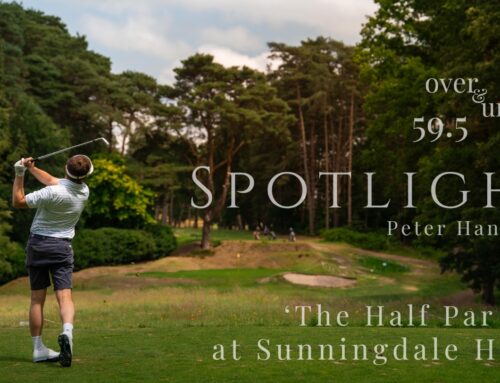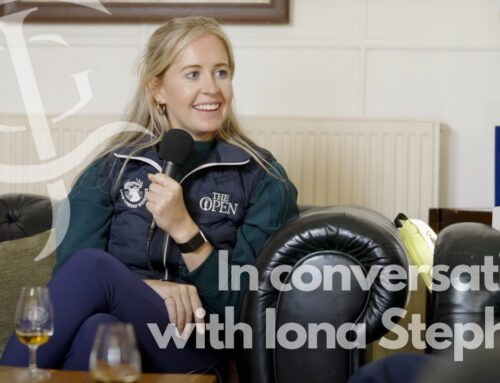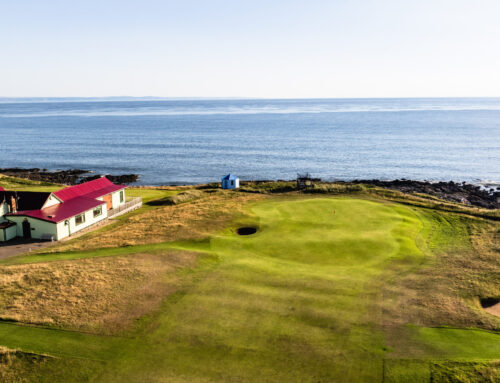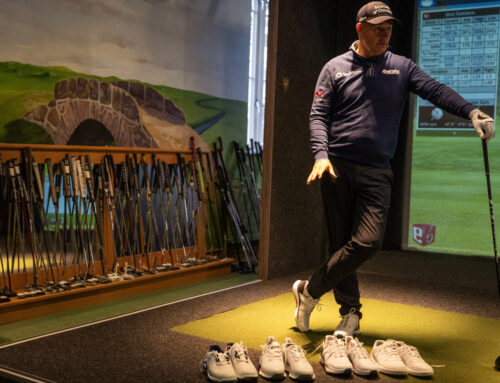Our second instalment from our Netherlands Tour in partnership with FootJoy at the end of 2022 takes us to Utrecht Golf Club – ‘De Pan’ – situated just 15 minutes outside of the student city of Utrecht. Utrecht Golf Club is regarded as one of the great inland layouts in continental Europe and consistently ranked inside the top 100 course in the world. Our Netherlands series will see us cover 5 courses, with a 2 part tour film, as well as 5 course films, podcasts from the clubs, photography on our social and of course some editorial over on our blog! Follow along to make sure you don’t miss a beat! Details of series below; 17 JAN: Eindhoven Golf Club 24 JAN: Utrecht Golf Club De Pan 31 JAN: Netherlands Tour Film pt I 7 FEB: Kennemer Golf & Country Club 14 FEB: Noordwijkse Golf Club 21 FEB: Royal Hague 28 FEB: Netherlands Tour Film pt II A huge thank you to our series partner FootJoy for making this trip possible, as well as our hosts at each of the clubs.

Utrecht Golf Club, affectionately known as ‘De Pan’, is the second oldest golf club in the country, having been founded as the Doornsche Golf Club in 1894. In 1926, the club moved from Doorn to its present site, reformed as Utrechtsche Golf Club De Pan, and the club commissioned Harry Colt to design their course.
As soon as you arrive at De Pan, it feels like a very intimate place. There’s no grand oversized clubhouse, but instead a collection of understated thatched barns arranged around a small courtyard, lying amidst the 1st and 10th tees.
Like many Dutch clubs, it’s a welcoming place with a diverse and buoyant membership, all bound by a love for the sport. There’s no pretence or sense of superiority, despite being home to one of the finest courses in Continental Europe.
In the first decades of the 20th century Colt had established himself as the pre-eminent name in golf course design – not just in Britain, but globally – and his work at De Pan is surely a testament to the vision and craft that he had developed. The land is only a modest 50 hectares in size, and yet as you play through the sand hills, heather and pines, not once feeling claustrophobic or that there was anything contrived here.
In his typically brisk fashion, Colt walked the land at De Pan and staked the course, before refining his designs back in England.
Voice credit: Ernst van den Doel: Archivist at Utrechtsche Golf Club
Ernst 10.20-29 “Colt worked very fast… he came and he walked through the country and in his mind he saw all the possibilities…”
Ernst 10.41-11.41“I recently read a story of Swinley Forest, which was about the same – he walked through the forest… par threes… in 1927/28 he designs the first 9 holes… Copain firm chosen as garden architect/developer and the work was very satisfactory, and everyone very happy and very soon the club… second 9 holes opened in 1932…”
Like most Colt courses in the Netherlands, it remains true to his original work with very few changes to the routing.
The first hole begins in close proximity to the clubhouse – a gentle par 5 opener allowing you to settle into your round and take in the beautiful surroundings, a hallmark of Colt’s design philosophy with more than just a subtle nod to Rye.
From there you gently weave and work your way through the trees and the heathland, and on every tee box you are greeted with a fresh challenge, each asking a different question.
The topography of the land, coupled with the relatively small size of the site, makes De Pan a comfortable walk, with natural transitions from green to tee. And yet, the rolling, sandy terrain has created gentle undulations in many of the fairways and natural run-offs and contours to defend the greens, somewhat reminiscent of those courses which lie on the Surrey-Berkshire sand belt in England.
Such is the quality of the course, it’s a difficult task to single out individual holes at De Pan for being particularly stand out.
After playing gently downhill at midlength par 3 third hole, the dogleg fourth plays to a green pitched severely front to back, with extreme contours on either side funneling the ball away from you, requiring the better player to control the distance of his approach shot played through the air, while still allowing the higher handicapper to run some in along the ground if they choose.
The 6th and 7th holes could be the strongest back-to-back pars 4 you’ll find anywhere in the world. The 6th plays over 400 yards, requiring a committed drive played blind over the rumpled fairway ahead of you, and then a semi-blind approach to a green tucked amongst heathery mounds.
The 7th is a classic half par – a ball worked left-to-right with a longer club might scamper its way up close to the green, but with pines and heather lurking close by, the more sensible option could be an iron for safety.
At some courses, the 10th hole can feel like an afterthought, a means of going from A to B or simply getting back out to the course and away from the house. But at De Pan, the 10th might just be the best of them all. A quirky feature is the traffic light which you press on the tee to alert those walking between the courtyard and the car park that you’ll soon be playing your shot over their heads – and as you step onto the elevated tee box, the shape of the challenge ahead is in full view: the green lies 350 yards or so away, seemingly perched in the middle of a V created by two crashing mounds covered with heather. The fairway is heavily undulating, and it’s easy to play your tee shot too far down, leaving an awkward downslope from which you must play your approach to the small green.
The 11th is a brilliant par 5, tempting the longer hitters into being brave and playing their tee shots over heather on the right – a longer carry but one which gives you a chance of finding the surface in two.
15 is a beautiful but challenging par 3 where any shot that is less than good will leave you an up and down somewhere between challenging and nigh-on impossible. Colt’s brilliant trickery plain to see.
And the 17th is another exciting half-par hole, teeing off from one of the highest points on the course with the green tucked just 300 yards away between several bunkers and mounds of heather. There’s a chance for you to be a hero, but also gives you an opportunity to fail miserably.
But, for all of the great golf holes when viewed in isolation, De Pan is in that rare breed of courses where the sum is greater than its parts, a collection of holes that when packaged together elevate it even further. It is a harmonious, peaceful and natural routing – easy on the legs and taxing on the brain – which leaves you holing out on 18 with a thirst to walk straight back to the 1st tee again. To achieve this, on a relatively small parcel of dense forest land on the city limits nearly 100 years ago, and today to remain as relevant as it was then is nothing short of miraculous.
The architect Guy Campbell, known for his work at Princes and Deal, perhaps summed it up best when he wrote in The Times in 1939: all players have conjured a vision of their ideal inland course. A course that shall incorporate all the fine features of a links, but with the light and shade, the aromatic scents, and vistas and backgrounds of red-boled, green-headed pines. A course where the fairways are spacious, where an erring shot will not be lost. De Pan has every one of these rare qualities; as a dream course, it fills the bill.”






